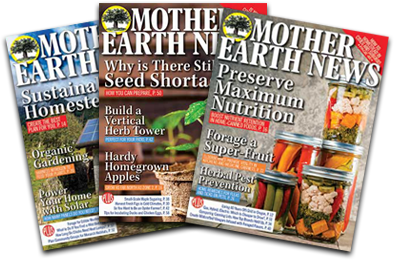I’ve discovered a great way not only to use less energy in food preparation, but to serve tastier and more nutritious meals at the same’ time! It’s great-grandma’s nonelectric version of the modern Crock-Pot: the haybox cooker.
Make (Or Find) Your Own
My family first used this once-popular pioneer cooking method about two years ago, and we’ve been haybox cooking fans ever since! Here’s how we went about it:
We began by building a sturdy, attractive, nearly airtight box out of tongue-and-groove knotty pine. The crate measures 30″ x 30″ x 30″, and has a snug-fitting hinged lid. (You might already have a reasonably sound trunk or lidded box that will serve the same purpose.)
Next we glued heavy paper to the container’s inside surface (overlapping the edges of this insulating layer to cover any cracks or open spaces) … selected fresh, fine hay (coarse or clover hay won’t do) … packed the box about three-quarters full … and hollowed out a large enough “nest” to hold our two-and-a-half-quart, cast-iron Dutch oven. (We chose such a heavy metal utensil because we knew it would retain heat well.)
Finally, we made a pillow casing out of strong fabric and stuffed the sack with hay until it was large enough to fill the rest of the space in the box.
Some General Comments
When using the haybox method (as when preparing food with other slow cookers), you start the evening meal in the morning … while the following day’s breakfast is begun at night.
The necessary initial cooking time (use your stove or whatever heat source is handy) will vary, depending on the type of food you prepare. Just make sure that the dish you want to cook is boiling briskly when it’s transferred from the flame to the hay box. And remember … you can use less liquid than you’d normally need for a given recipe, since you won’t have to allow for evaporation.
(Unfortunately, I can’t provide you with any absolute rules on how to time your meals, since the amount of haybox cooking needed will depend on the length of the preliminary boiling and upon how tightly the hay is packed around the kettle. If you’ve done the insulating job well, the haybox will hold usable heat for up to eight hours.)
Should a meal have to be postponed for a short while, it will make little difference in the quality, taste, or temperature of the food … because a dish in a haybox oven won’t burn, overcook, or dry out. (You will, of course, need to use common sense about the length of time you allow food to remain in the box beyond the meal’s cooking time … as you would with food left in any cooling oven.)
Naturally, foods won’t get crisp when prepared with this type of cooking … but any recipe that calls for boiling, simmering, steaming, or roasting will often taste better– hot from the haybox– than it would with regular stove preparation … and you’ll save heat energy in the bargain!





